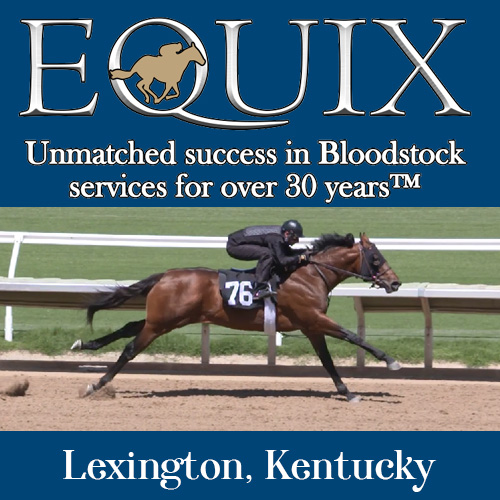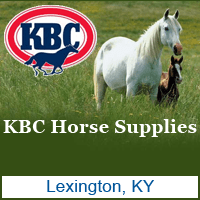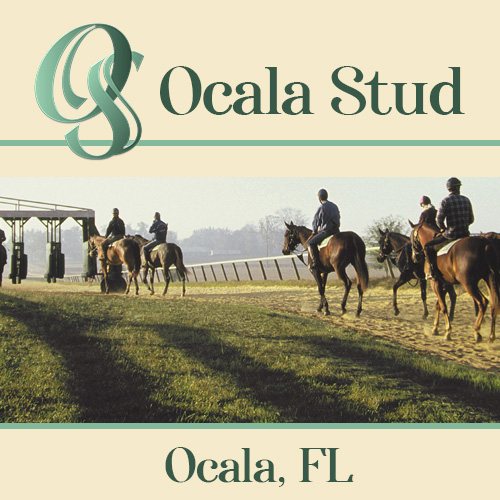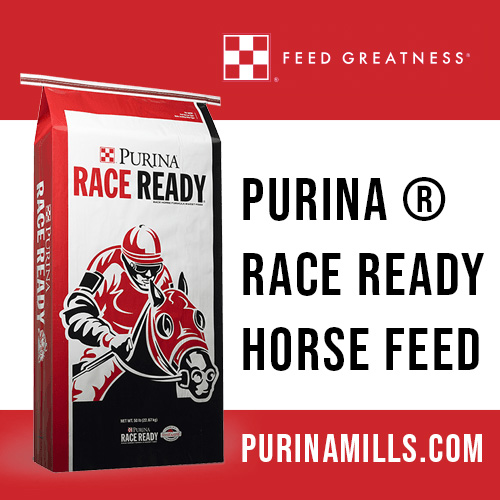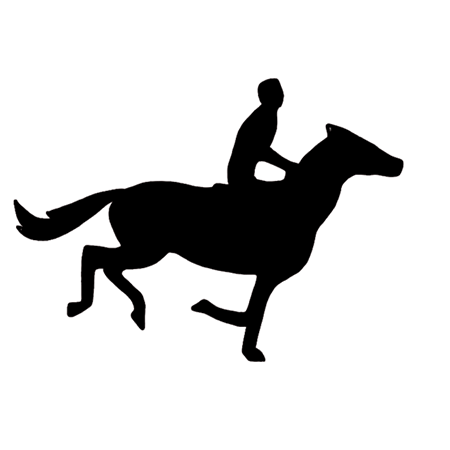Thoroughbred People's Equine Legends Series: Kentucky
By Kimberly French
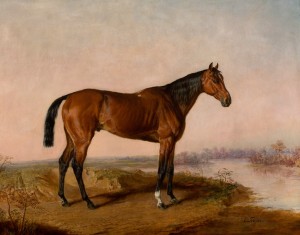 His biography for the National Museum of Racing and Hall of Fame calls him the horse that “time forgot”, as Kentucky was not inducted into this beloved shrine until 1983. It also claims he is “arguably the greatest son of Lexington ever inducted into the Hall.” Although that is certainly a matter up for debate, especially with Lexington’s prowess in the breeding shed, it cannot be denied Kentucky is a well-deserving member of this select circle of Thoroughbred icons.
His biography for the National Museum of Racing and Hall of Fame calls him the horse that “time forgot”, as Kentucky was not inducted into this beloved shrine until 1983. It also claims he is “arguably the greatest son of Lexington ever inducted into the Hall.” Although that is certainly a matter up for debate, especially with Lexington’s prowess in the breeding shed, it cannot be denied Kentucky is a well-deserving member of this select circle of Thoroughbred icons.
Bred at the famed Ashland stud by John M. Clay, one of the top such individuals in the world at that time, Kentucky was born in 1861. Out of the mare Magnolia, who was a daughter of the influential English import Glencoe, this colt was a beauty right from birth. A striking bay with a narrow white snip and splash of white on his right front pastern, Kentucky competed only once for the person responsible for his presence on earth. That was as a 2-year-old, when the colt won easily at a new facility in New Jersey.
Clay sold the horse on to John Hunter, an original founder of Saratoga Race Course and the first chairman of the Jockey Club. After the ownership transfer, Hunter appealed to William R. Travers and George Osgood to take pieces of his new prized possession. Both men acquiesced and the trio began to prepare Kentucky for his sophomore campaign.
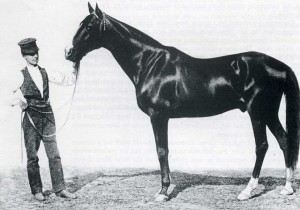 The colt resumed his racing career on June 7, 1864, in Paterson, New Jersey for the first edition of the 1½ mile Jersey Derby. The evidence is unclear as to whether Kentucky’s training had been interrupted or whether he was simply not at his best, but the result was certain: a loss. The colt struggled home a distant fourth behind Norfolk. Norfolk was also sired by Lexington and produced by a Glencoe mare.
The colt resumed his racing career on June 7, 1864, in Paterson, New Jersey for the first edition of the 1½ mile Jersey Derby. The evidence is unclear as to whether Kentucky’s training had been interrupted or whether he was simply not at his best, but the result was certain: a loss. The colt struggled home a distant fourth behind Norfolk. Norfolk was also sired by Lexington and produced by a Glencoe mare.
According to an edition of the Harper’s New Monthly Magazine (volume 41), “This defeat led to a long and bitter controversy.” Norfolk was taken out West by his connections and never ventured forth to take on Kentucky again to prove which was horse was “superior.”
That contest was the only one Kentucky ever lost in his entire career. Only 48 hours after his trouncing by Norfolk, the colt visited the winners’ circle for the second time in the two mile Sequel Stakes and was then transported to Saratoga. The race track opened its gates for the first time on August 2, 1864. This was only a few weeks after more than 7,000 Union soldiers had met their deaths in a horrific Civil War battle at Cold Harbor, Va. At the “Spa” however, the attendees were far removed from the gruesome spectacle of war and their attention was firmly affixed to the wonders of Thoroughbred competition.
The very first Travers Stakes was the first racing event on the agenda at the new racing facility. The contest was named in honor of William R. Travers, one of Kentucky’s three owners and the president of the Saratoga Association. Kentucky annexed the race by a widening three lengths with fellow future Hall of Famer Gilbert W. Patrick holding the reins. After cruising home in the Travers, Kentucky captured another two mile race at Saratoga and then traveled on to New Jersey, where he won three more races in five days, one of which was the Jersey St. Leger at 2 ¼ miles.
His Hall of Fame biography called him “the undisputed best horse in America” during his four and five year seasons. He raced seven times from June to October of 1865 with one triumph coming in the first ever Saratoga Cup, which was quite prestigious in its day, and two other victories being walkovers, because no one wanted to run against him.
In 1866 at age five, Kentucky would once again remain undefeated. On June 6 in New Jersey he held Norwich at bay in two mile heats. Twenty four hours later he won a three mile race in 6:04¼. The very next day he repeated the same exact feat, except his time in the first and second heats was swifter. After the stallion galloped 13 miles in 72 hours, his connections afforded him the opportunity to rest until Saratoga reopened.
Upon his return Kentucky collected his second Saratoga Cup and then went four miles in a walkover performance, as his prep for Jerome Park’s Inaugural Stakes. Contested as four consecutive four mile heats, this race also proved quite facile for the stallion as he came home virtually unchallenged.
After his appearance in New Jersey, Kentucky was sold to Leonard Jerome. The man whom the Jerome Handicap was named for and the grandfather of Sir Winston Churchill, was smitten by the son of the Lexington, as were most followers of the turf. In fact, he offered his connections $40,000, the highest price ever paid for a horse, to obtain him. Understandably, Kentucky’s owners decided to part with him and he proved the price paid was worth its weight in gold with another easy win in the Grand National Handicap. It would be the only start Kentucky ever made for Jerome, as he gave anywhere from 19 to 24 pounds to the rest of the field. With his win streak now at 20, Jerome decided there was nothing left for Kentucky to accomplish.
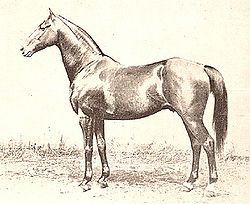 Harpers contends that was not exactly the case. As Kentucky’s half-brother Norfolk was gaining esteem out West, another half-brother, Asteroid, was building his own following in the Midwest.
Harpers contends that was not exactly the case. As Kentucky’s half-brother Norfolk was gaining esteem out West, another half-brother, Asteroid, was building his own following in the Midwest.
“Distance separated the three half-brothers: each won renown on fields highly apart,” the magazine said. “Each was claimed the superior of the other and it was the fond dream of enthusiastic turfmen to bring them together in a race for the honours of supremacy. But the dream was never realized. The controversy between the friends of Kentucky and Asteroid, especially, was marked with much feeling and the names of the two horses were daily in the mouths of thousands.”
The Hall of Fame biography does not mention it and the book The Thoroughbred by E.S. Montgomery states the owners of Kentucky and Asteroid had arranged two match races between them. One would be held in New York and one would be contested in Louisville, which was Asteroid’s home track. The winner of those two contests would take all of a $20,000 pot. Harpers, however, says nothing of a match race and merely that the two horses were slated to meet in the Inauguration Stakes.
“When it was known that Asteroid had left his paddock at Woodburn to journey East, the excitement was intense in turf circles and the trains brought to New York crowds from all over the Union, including far-off Texas,” the magazine said. “The coming race was an all absorbing topic of conversation. Every morning hundreds of visitors went out to Jerome Park to see the horses at work. Asteroid was one of the grandest looking horses to ever tread the turf and one had only to see him to admire him. Kentucky was also a magnificent appearing animal and his friends maintained confidence in his prowess.”
Then as often transpires in horse racing, the revered meeting between these two titans of the turf vanished into thin air.
“But one Sunday morning a gloom fell upon all hearts,” Harpers said. “Lip spoke to lip and the intelligence rapidly spread that Asteroid had broken down in a trial gallop in the mud. He had sprung a tendon and his career as a racer was abruptly brought to a close. The disappointment was great. Sad faces were seen on all the drives to the Park; and as the story was told, a tear dimmed more than one eye unused to weeping.”
Two years after his retirement they brought Kentucky back to the track to eclipse his sire’s world record mark for four miles (7:19¾). Jerome even wagered $5,000 that the stallion would establish a new speed standard for the distance.
The contest against the clock took place on Thursday, October 17, 1866 at Jerome Park before 20,000 witnesses. Kentucky carried 120 pounds and jockey Charles Littlefield. Three miles into the event he was two full seconds ahead of Lexington's time, although his sire had only carried 103 pounds in his time trial. In the stretch, Kentucky clearly illustrated he had enough and attempted to bolt. When he hit the wire his time was 12 seconds slower than Lexington’s.
“Kentucky was badly ridden, was outpaced in the first two miles and lost the race by the equivalent of 11 and three quarter lengths,” Harpers said. “The only time that the people ever saw him show signs of distress was when he was coming down the homestretch in the last mile; he was weak, he was tottering and his courage failed him. Even had he been properly managed on that lovely October day, we do not think he could have been successful. The task was too great for him – he was overmatched. He carried too much weight; and every ounce tells upon the speed and endurance of a horse, especially in a struggle over four miles. By weight you can reduce the fleetest and gamest racer in the world to the level of the most common hack. Kentucky is not a stronger horse than Lexington was and Lexington carried but 103 pounds.”
A year after his last appearance on the track, Kentucky was sold through auction for $15,000 to August Belmont. He took up residence in Belmont’s Nursery Stud until he passed away in 1875 at age 14. Coincidentally, that was the same year his great sire perished, but Kentucky never replicated the success in the breeding shed Lexington enjoyed. He did sire the champion filly Woodbine (1869) and the stakes winners Bertram, and the filly Elastic (1871).



